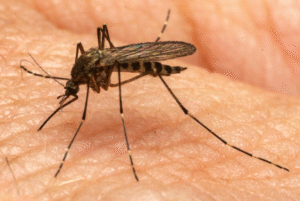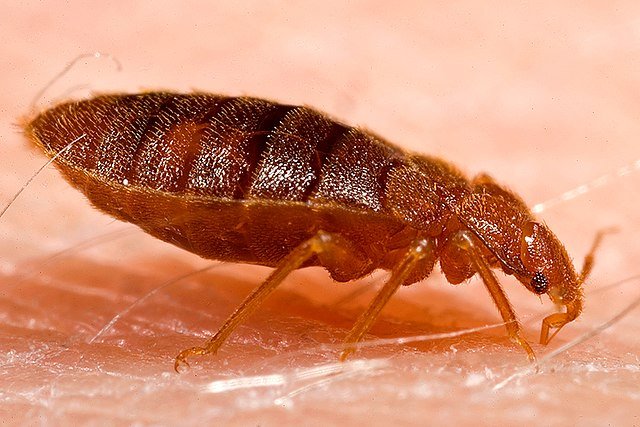Mosquitoes (Culicidae): Identification, Risks, and Control Strategies
 Mosquitoes are among the most notorious insects on Earth. Belonging to the family Culicidae, these small flying insects are found almost everywhere except Antarctica. Their infamous reputation stems not only from their irritating bites but also from their role as vectors of serious diseases such as malaria, dengue fever, West Nile virus, and Zika virus.
Mosquitoes are among the most notorious insects on Earth. Belonging to the family Culicidae, these small flying insects are found almost everywhere except Antarctica. Their infamous reputation stems not only from their irritating bites but also from their role as vectors of serious diseases such as malaria, dengue fever, West Nile virus, and Zika virus.
Unlike house flies (Musca domestica) or cockroaches (Blattodea), which mainly cause nuisance and contamination, mosquitoes have shaped human history by influencing population movement, warfare outcomes, and global health policies. Understanding their biology and behavior is critical for effective mosquito control and for reducing the spread of mosquito-borne illnesses.
Identification
Mosquitoes are slender insects with long legs and a characteristic elongated mouthpart known as a proboscis. Key features include:
Size: Usually 3–6 mm long, though some tropical species exceed 10 mm.
Color: Ranges from light brown to black, sometimes with white or silvery markings.
Wings: Narrow and covered with fine scales.
Antennae: Males have bushy antennae, while females’ antennae are less feathery.
Proboscis: Females have a sharp proboscis designed for piercing skin and sucking blood, while males typically feed only on nectar.
Species such as Aedes aegypti (yellow fever mosquito), Anopheles gambiae (primary malaria vector), and Culex pipiens (common house mosquito) can often be identified by subtle markings on their legs, thorax, or wings.
Biology and Ecology
The mosquito life cycle consists of four stages: egg, larva, pupa, and adult. This complete metamorphosis allows them to thrive in diverse environments.
Eggs: Laid on water surfaces or damp areas. Some species (like Aedes aegypti) can survive months in dry conditions until water reactivates them.
Larvae ("wigglers"): Aquatic, feeding on microorganisms and organic matter.
Pupae ("tumblers"): Non-feeding stage, where transformation to adult occurs.
Adults: Males typically live a few days, while females can survive for weeks or even months if conditions are favorable.
Female mosquitoes require a blood meal to produce eggs. The blood provides protein and iron, which are absent from their usual sugar-based diet. This biological requirement is what makes mosquitoes dangerous disease vectors.
Ecologically, mosquitoes are also part of the food web. Their larvae are eaten by fish, amphibians, and aquatic insects, while adults serve as prey for birds such as swallows and bats.
Global Distribution
Mosquitoes thrive in tropical, subtropical, and temperate zones. They are present on every continent except Antarctica.
Tropical regions: The highest species diversity and disease transmission risk.
Temperate climates: Seasonal activity, often peaking in late spring and summer.
Urban environments: Standing water from gutters, buckets, and discarded tires create breeding grounds.
Rural areas: Irrigation systems, rice paddies, and wetlands sustain large populations.
Notably, Anopheles gambiae in sub-Saharan Africa remains the deadliest vector for malaria, while Aedes aegypti has spread globally due to urbanization and international trade, increasing the incidence of dengue and Zika outbreaks.
Risks and Damage
Mosquitoes are considered the deadliest animals in the world because of the diseases they transmit. Key risks include:
Malaria: Caused by Plasmodium parasites, transmitted by Anopheles mosquitoes.
Dengue fever, Zika virus, Chikungunya, Yellow fever: Spread by Aedes aegypti and Aedes albopictus.
West Nile virus, Japanese encephalitis, St. Louis encephalitis: Mainly carried by Culex species.
Filariasis (elephantiasis): Spread by several mosquito species, leading to long-term disability.
Beyond disease, mosquitoes also cause:
Allergic reactions to bites, leading to swelling and itching.
Economic damage, including healthcare costs and lost productivity.
Impact on tourism in regions where mosquito-borne diseases are common.
Signs of Infestation
Unlike termites or bed bugs, which leave subtle signs, mosquitoes make their presence obvious. Key indicators include:
Frequent mosquito bites on humans and animals.
High-pitched buzzing sound near ears.
Visible adults resting in shady corners, bathrooms, or outdoor vegetation.
Presence of larvae (“wigglers”) in stagnant water.
Increased bird or bat activity near water bodies (feeding on mosquito populations).
Control Methods
Mosquito pest control requires a combination of environmental, mechanical, biological, and chemical measures:
1. Environmental Management
Eliminate standing water (gutters, tires, buckets).
Maintain swimming pools with chlorine.
Improve drainage in yards and farms.
2. Mechanical Control
Use window and door screens.
Sleep under bed nets (treated with insecticide where malaria is present).
Install fans indoors—mosquitoes are weak fliers.
3. Biological Control
Stock ponds with mosquito fish (Gambusia affinis).
Encourage dragonflies and other natural predators.
Release of Wolbachia-infected mosquitoes to suppress populations.
4. Chemical Control
Use larvicides (e.g., methoprene, Bacillus thuringiensis israelensis).
Apply residual insecticides in high-risk areas.
Personal repellents containing DEET, picaridin, or oil of lemon eucalyptus.
Advanced Approaches
Modern mosquito control is exploring innovative strategies:
Sterile Insect Technique (SIT): Release of sterilized males to reduce reproduction.
Genetically Modified (GM) mosquitoes: Engineered to suppress offspring survival.
Autodissemination traps: Adult mosquitoes spread larvicide to breeding sites.
Drone surveillance: Used for mapping and targeting breeding sites in large areas.
These methods, combined with traditional strategies, form the backbone of integrated mosquito management (IMM).
Cultural and Historical Context
Mosquitoes have influenced human civilization in profound ways:
Ancient Greece and Rome: Malaria weakened armies and influenced wars. Historians argue that mosquito-borne diseases slowed the expansion of empires.
American Civil War: Outbreaks of malaria and yellow fever decimated troops in swampy battlefields.
Construction projects: The Panama Canal was nearly abandoned until mosquito control allowed completion.
Modern tourism: Caribbean and Southeast Asian economies spend billions to protect visitors from outbreaks.
Culturally, mosquitoes symbolize irritation and persistence, often used in literature and folklore as metaphors for unavoidable nuisances.
FAQ – Mosquitoes
Q1. Why do mosquitoes bite some people more than others?
Yes. Factors include body heat, carbon dioxide output, blood type, skin bacteria, and even the color of clothing.
Q2. Can mosquitoes bite through clothes?
Thin or tight-fitting fabrics can be penetrated by the mosquito’s proboscis. Loose clothing offers better protection.
Q3. Do mosquitoes die after biting?
No. Unlike bees, female mosquitoes survive after feeding and can bite multiple times.
Q4. How far do mosquitoes travel from their breeding site?
Most species remain within 1–3 km of their breeding area, though some Aedes species travel much less, staying close to humans.
Q5. Can you completely eliminate mosquitoes from your property?
Total elimination is nearly impossible, but reducing breeding grounds and using control methods can significantly minimize populations.
Q6. Are all mosquito species dangerous?
Out of over 3,500 species, only a few hundred bite humans, and fewer than 100 transmit serious diseases. Many species are harmless nectar feeders.
Final Thoughts
Mosquitoes (Culicidae) are far more than just annoying summertime pests. Their ability to transmit deadly diseases makes them one of the most significant threats to human health worldwide. From ancient wars to modern public health challenges, these tiny insects have left an enormous mark on history and continue to shape how societies live and adapt.
For homeowners and communities, prevention is the most powerful tool. Eliminating stagnant water, improving sanitation, and using protective barriers drastically reduces mosquito populations. On a larger scale, innovative approaches such as sterile insect releases and genetically modified mosquitoes may transform mosquito management in the future.
Although complete eradication of mosquitoes is unrealistic, integrated strategies combining environmental, biological, and chemical methods can greatly minimize their impact. Staying informed, vigilant, and proactive is the best defense against these resilient pests.
Disclaimer
This article is for informational purposes only. Pest control laws and approved chemicals vary by country. For best results and legal safety, we strongly recommend contacting a licensed pest control professional in your local area. Always make sure that the pest control technician is properly certified or licensed, depending on your country’s regulations. It’s important to confirm that they only use approved products and apply them exactly as instructed on the product label. In most places in Europe, UK, or USA, following label directions is not just best practice—it’s the law.
Author Bio
Nasos Iliopoulos, BSc Agronomist & Certified Pest Control Expert
Scientific Director – Advance Services (Athens, Greece)
Licensed Pest Control Business – Ministry of Rural Development & Food (GR)
With a background in agronomy and pest management, Nasos Iliopoulos specializes in environmentally responsible and scientifically proven solutions for controlling pests. His work combines practical field expertise with evidence-based strategies to protect homes, businesses, and communities.
References
Britannica - Mosquitoes
National Geographic - Mosquitoes

